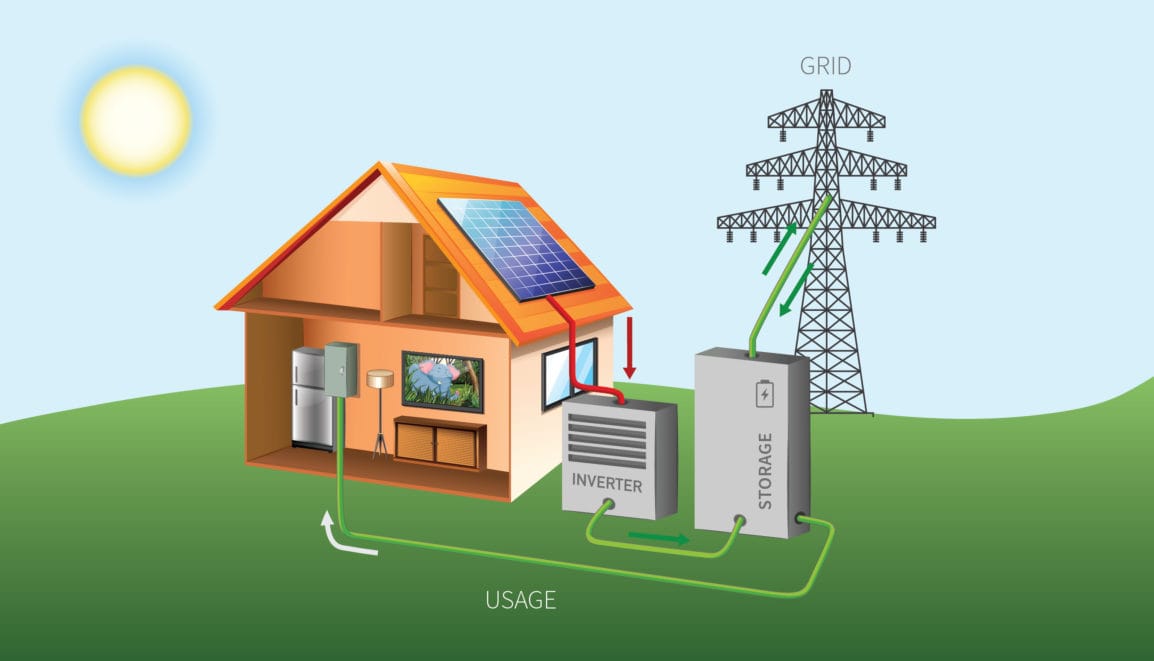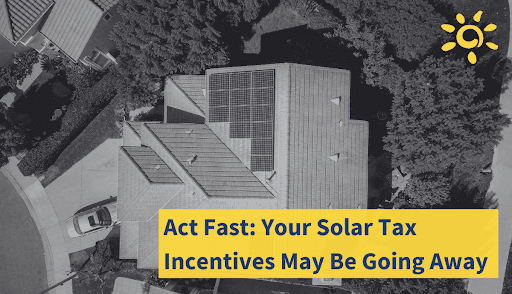There are many options when it comes to a fully grid-tied solar system. A grid-tied system will allow you to save more money with solar panels through better efficiency rates, net metering, plus lower equipment and installation costs. The addition of batteries has become more popular and allows for a grid-tied solar system to be hybrid and partially function off the grid. This can be especially beneficial for those on wells or with a medical basis during a power outage.
Your solar panels will often generate more electricity than what you are capable of consuming. With net metering, homeowners can put this excess electricity onto the utility grid instead of storing it themselves with batteries. The addition of a battery allows one to store and utilize excess energy before it is sent back to the grid. A typical solar battery can deliver approximately 10 kWh of capacity; with three backup batteries, an average home in the U.S. can have enough energy to power their home for 24hrs using the reserve energy from the battery.
Updates to the SGIP Process
This year, California took steps to provide funding for an extra battery back-up for people on a well or with a medical basis. This is referred to as the Equity Resiliency program for home energy storage. The California Public Utilities Commission (CPUC) has decided to change the rules regarding qualification for the energy storage rebate into a tiered eligibility requirement. This rebate was initially made available for homeowners who live in a high fire zone and rely on a well for their water supply, and/or qualify for a low-income discount or medical baseline allowance from their electric utility provider.
You can view the updated requirements here: https://www.pge.com/en_US/residential/save-energy-money/savings-solutions-and-rebates/understand-the-solar-process.page
Unfortunately, on September 9th, the California Public Utilities Commission (CPUC) proposed new measures to make the “equity resilience” energy storage subsidy more equitable by disqualifying applicants that previously would have been approved for the Equity Resiliency rebate based on having a well. Upon hearing the news, there was a huge outcry from the solar industry, prompting letters to be written by the California Solar and Storage Association along with solar companies like A.M. Sun Solar. This was all to no avail, and the final decision was made on October 22nd to retroactively disqualify previously qualified applicants who did not have a confirmed reservation prior to August 17th. This was a significant blow to every applicant and every solar company in California that invested thousands of dollars and countless staff hours identifying eligible customers, designing projects, and learning SGIP’s complex application process for projects that complied with the program’s original rules only to hear those guidelines had changed. It was not until late November that the CPUC gave clear guidance on what is considered low income. These events have resulted in fewer people being able to afford a hybrid solar system with extra battery back-up.
If you have questions about the updated SGIP process or if a grid-tied or hybrid solar system is right for your home, give us a call at (805) 457-4068 or contact us at hello@amsunsolar.com.


